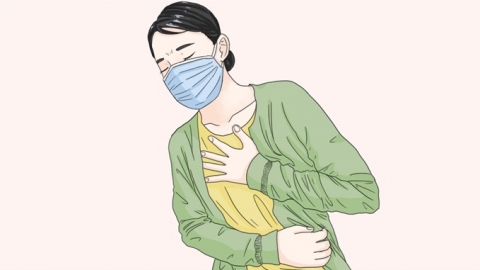What causes pain on the right side of the chest?
Generally, right-sided chest pain may be caused by factors such as muscle strain, ill-fitting undergarments, costochondritis, pleuritis, pneumonia, and other conditions. If you experience any discomfort, seek medical attention promptly and undergo symptomatic treatment under the guidance of a qualified physician. A detailed explanation is as follows:

1. Muscle Strain
Prolonged poor posture, such as working at a desk for extended periods or habitual slouching, or excessive chest muscle exercise like numerous push-ups and chest-expanding movements, can keep the right chest muscles in a tense state. This tension can lead to muscle fatigue, accumulation of metabolic byproducts, and stimulation of nerve endings, resulting in pain. It is advisable to maintain correct sitting and standing postures, avoid staying in the same position for long periods, warm up adequately before exercising, and appropriately manage the intensity and duration of physical activity.
2. Ill-fitting Undergarments
If women wear undergarments that are too tight, particularly those with overly constricting bands or insufficient cup size, excessive pressure may be exerted on the right breast. This pressure can impair blood circulation, leading to localized tissue ischemia and hypoxia, which may cause pain. Women should choose undergarments of appropriate size, made from comfortable materials with adequate support. Regular breast measurements and timely replacement of bras in accordance with body changes are also recommended.
3. Costochondritis
Costochondritis is often caused by viral infections, chronic injury to the costosternal joint ligaments, or endocrine disorders. Inflammation occurs at the junction of the rib cartilage and rib bone, and the resulting inflammation may stimulate surrounding nerves, causing right-sided chest pain. Swelling and restricted movement may also occur. Treatment may include medications such as celecoxib capsules, diclofenac sodium sustained-release tablets, and etoricoxib tablets, under a physician's guidance.
4. Pleurisy
Pleurisy is commonly triggered by infections such as bacteria or viruses, or by autoimmune diseases. Inflammation of the visceral and parietal layers of the pleura can cause irritation, leading to chest pain, particularly during respiration or coughing when the two layers of pleura rub against each other. Symptoms may also include fever and sputum production. Patients may use medications such as cefuroxime axetil tablets, ibuprofen sustained-release capsules, and prednisone acetate tablets according to medical advice.
5. Pneumonia
Pneumonia is primarily caused by infection with pathogens such as bacteria, viruses, or mycoplasma. When lung inflammation involves the pleura or chest wall, chest pain may occur, often accompanied by symptoms such as fever and fatigue. Patients may be advised by physicians to undergo treatment using medications such as penicillin V potassium tablets, doxycycline hydrochloride tablets, and fluconazole sodium chloride injection.
In daily life, maintaining healthy lifestyle habits is important. Avoid strenuous exercise and sudden chest exertion, and keep warm to prevent respiratory infections, thereby reducing the risk of chest pain due to infection.








